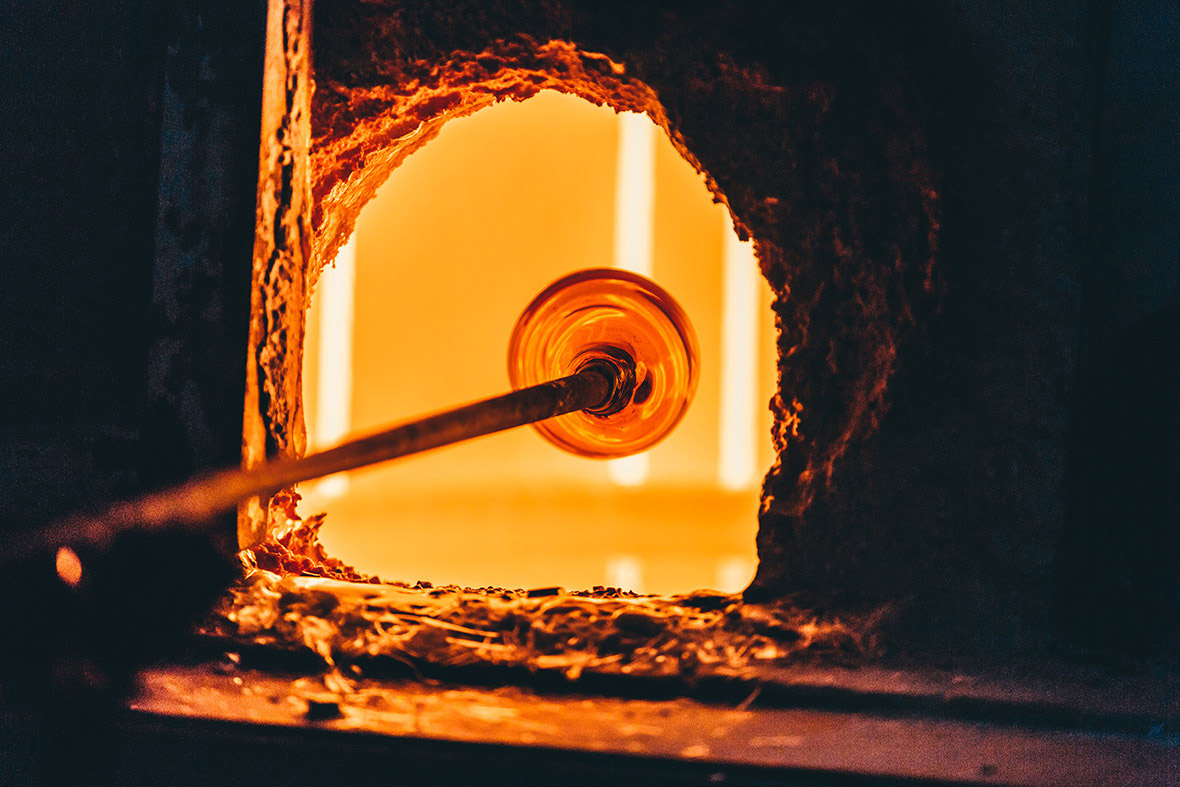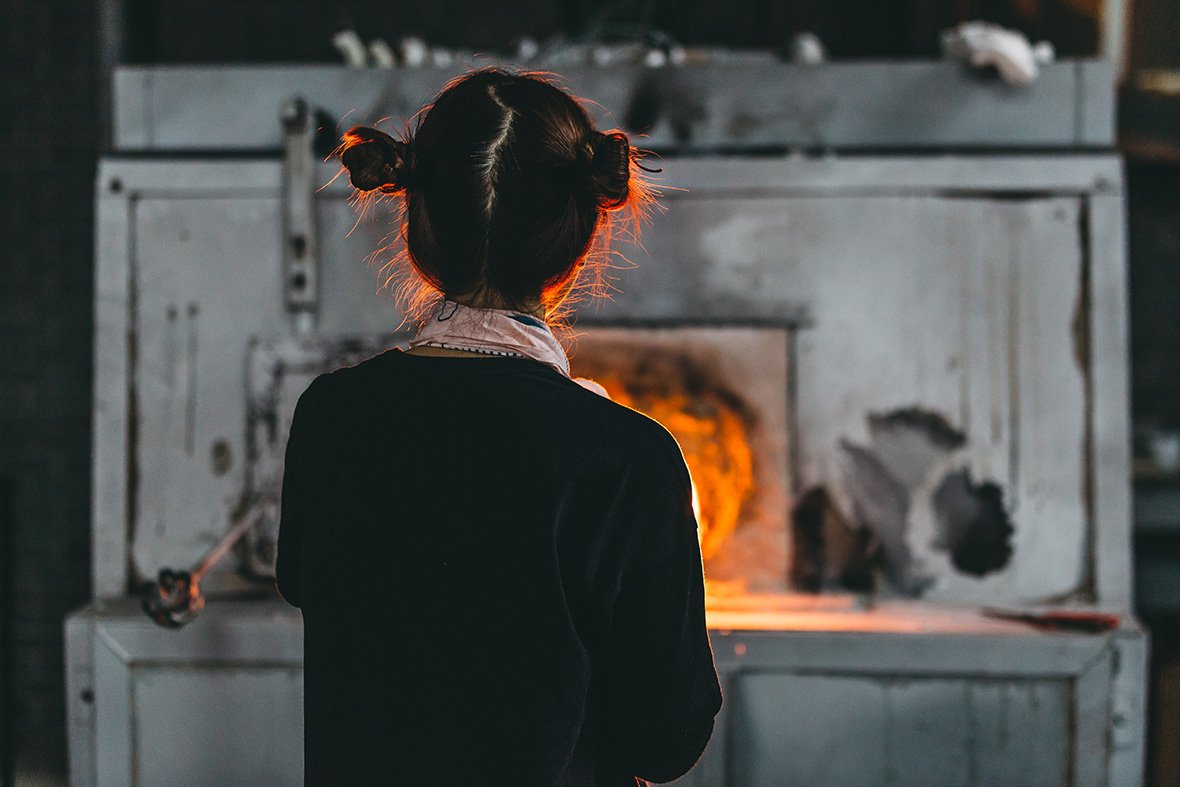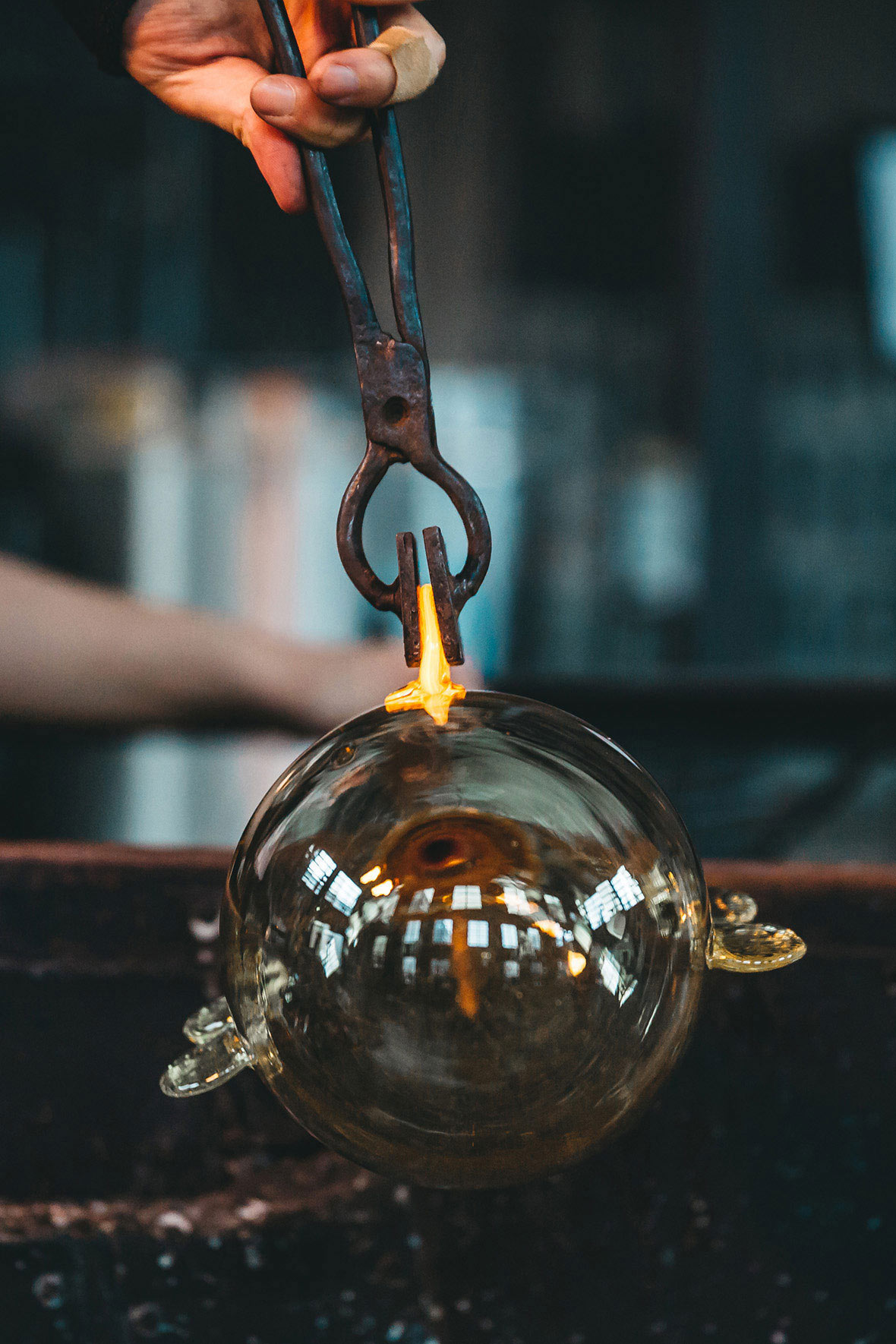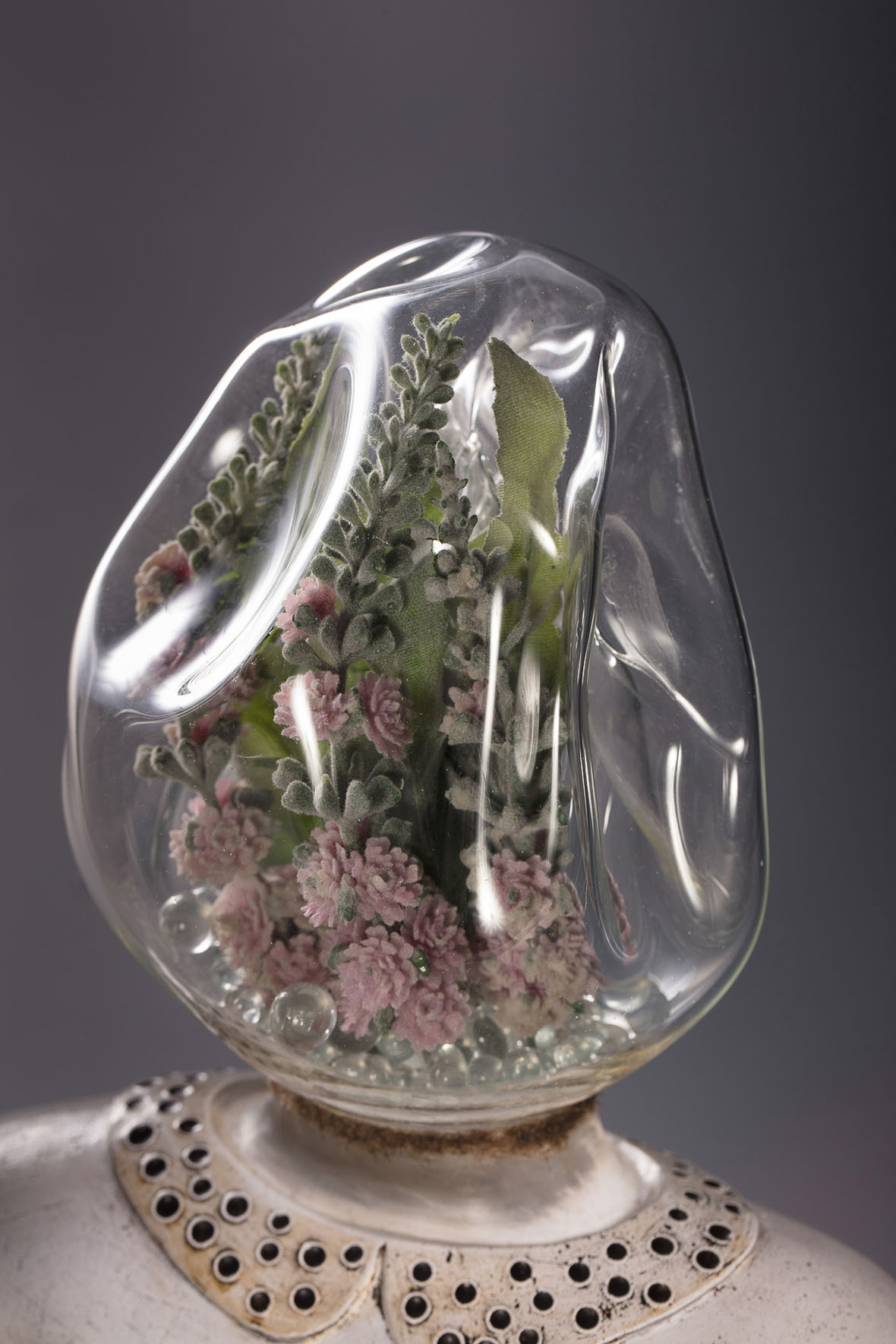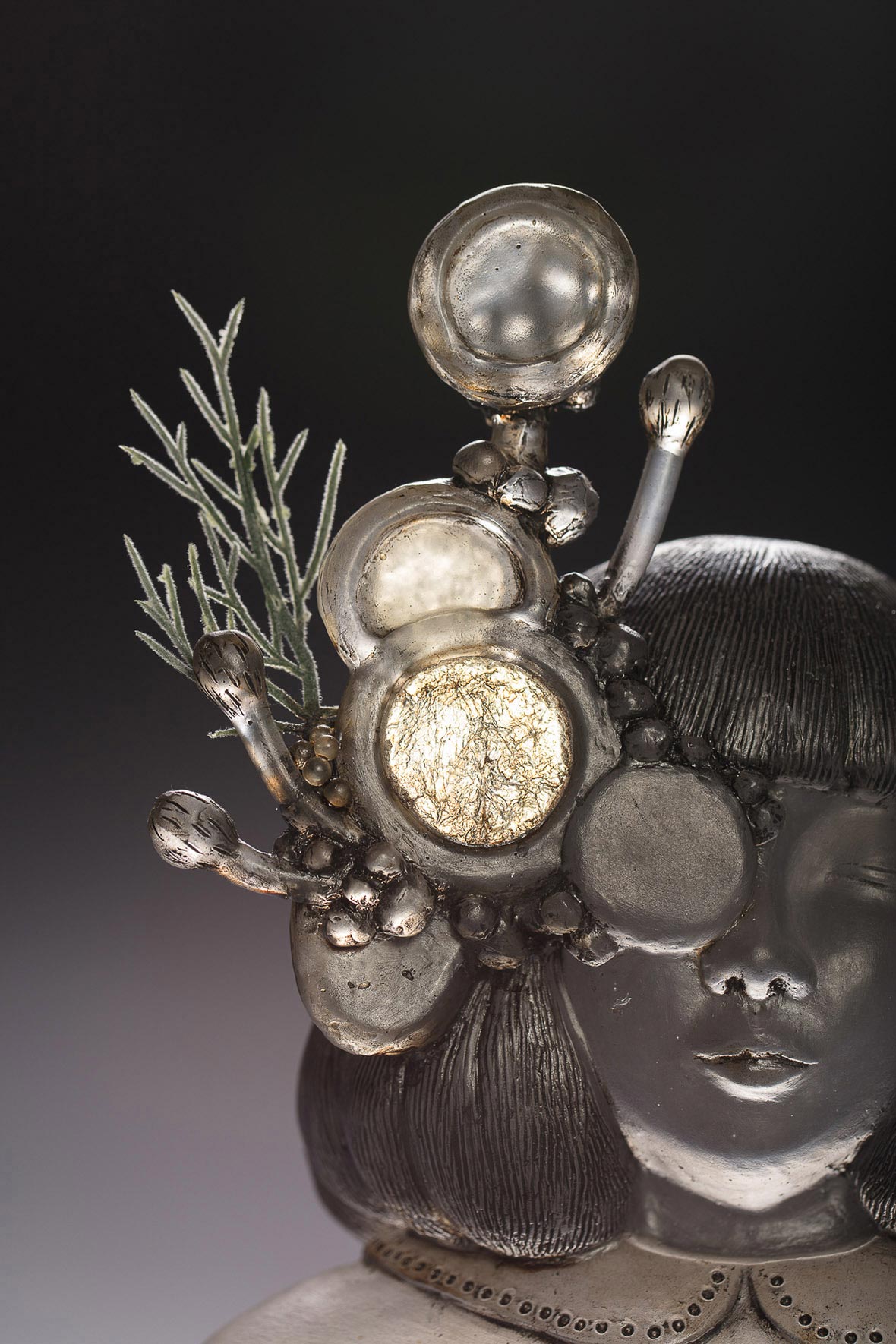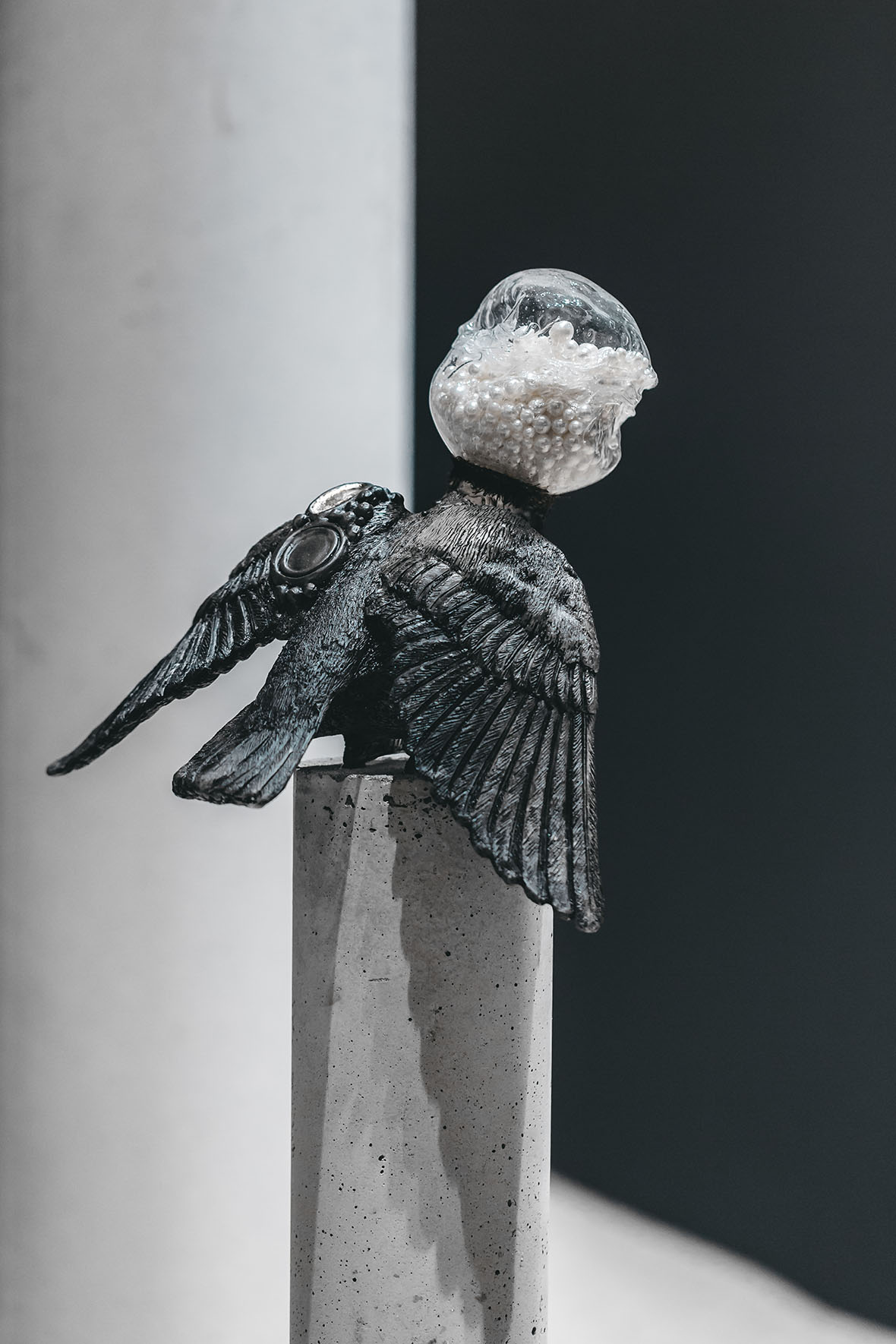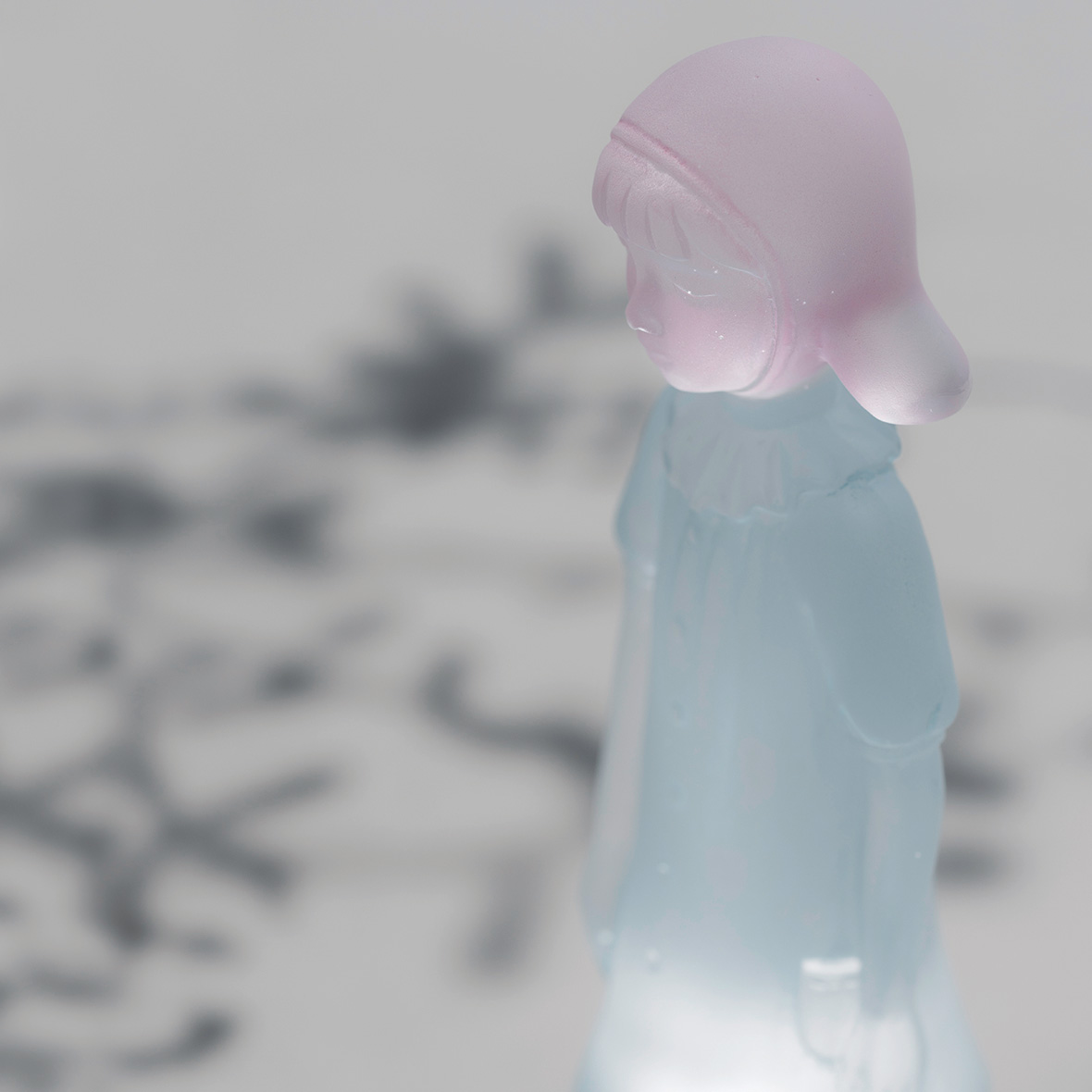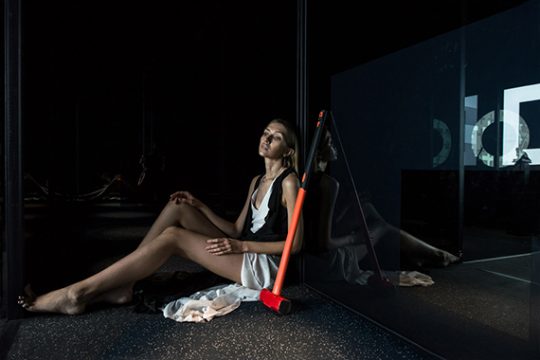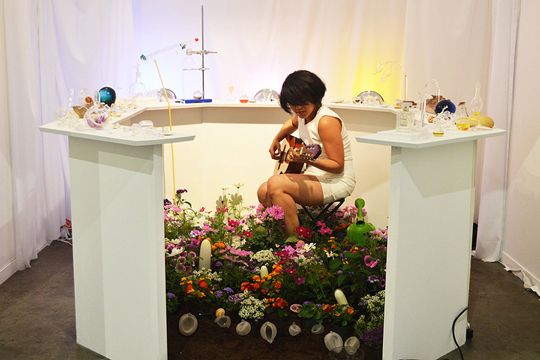无法观看?前往优酷
At 600 – 1000˚ C it slowly melts, forming a flame-red liquid – watery yet ablaze. Cooling down, it solidifies into a transparent substance. This wondrous material is none other than glass.
Pulling the iron rod from the furnace, Beijing-based glass artist Du Meng blows into one end to begin shaping the wad of molten glass on the other. The luminous orange of the liquid glass is captivating, hypnotic even, tempting you to draw closer to its deadly heat.
它一半是海水,一半是火焰;它只能在 600 – 1000 ℃ 的高温下慢慢融化,化作一滩火色的水,再一点点降温,凝结成冰的形状。它就是玻璃。
来自北京的玻璃艺术家杜蒙,在我们的镜头前支起一根吹管,把一团流动的火焰吹了起来。热烈的橙色引诱着你目不转睛地看着它,也引诱着你一步步向危险靠近。
At the Central Academy of Fine Arts in Beijing, Du Meng studied graphic design, a field she felt had “limitless potential.” But as time went on, doubts began to fester. To an artist who yearned to work with her hands, graphic design seemed a little too fast, a little too hectic.
After graduation, she watched a live glassblowing performance on her first visit to the US. This became a eureka moment for her. “It was all because of that exhibition. It changed the way I looked at glass,” she recalls. “It opened my eyes to how this material could be used for artistic expression.”
在中央美院念本科的时候,杜蒙学的是平面设计。这个看似“前途无量”的专业,却让杜蒙一次次感到疑惑──的确,对一个热衷亲手塑造艺术品的艺术家来说,这有些太快了,也有些太多了。
毕业那年,在去美国首次接触到了玻璃的艺术表演形式之后,杜蒙心动了:“就是因为那次展览改变了我对玻璃的看法,让我觉得原来它也是可以有艺术表现的这么个方向的。”
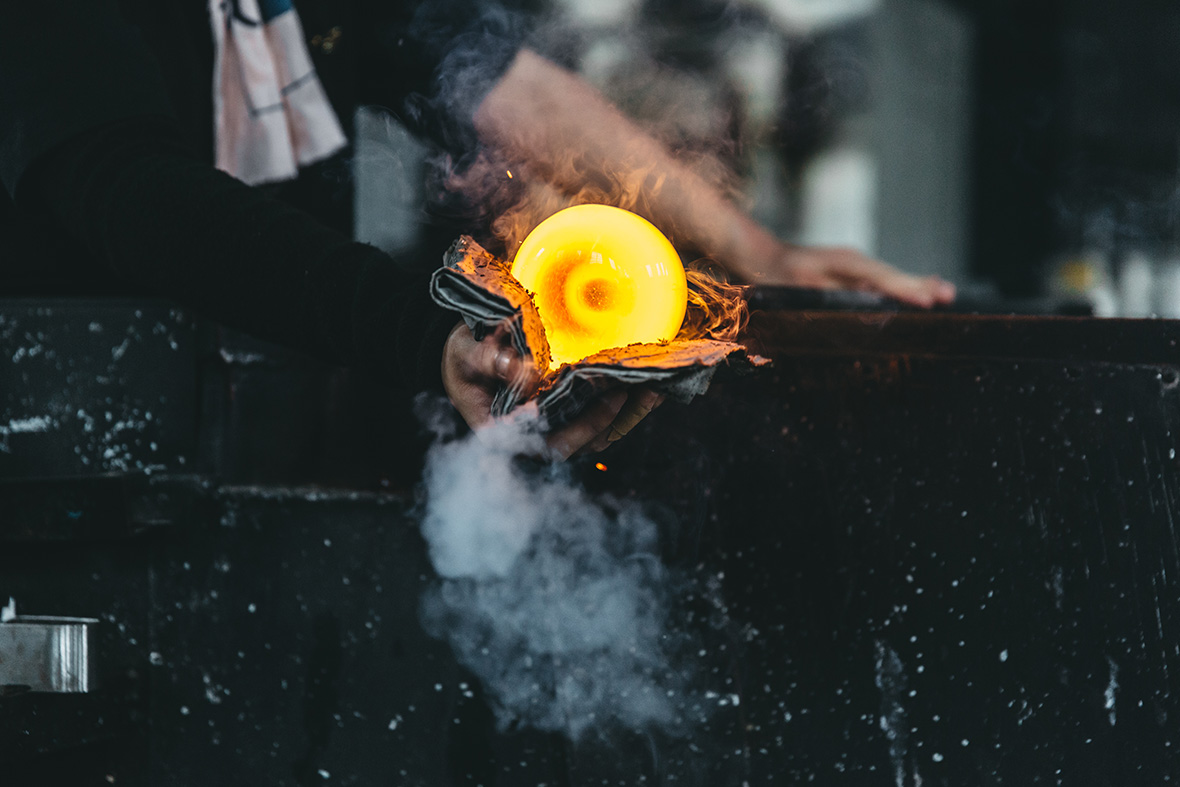
But picking up glassblowing is no easy feat for a complete novice. “It’s scorching hot, and it’s easy to get hurt,” she says. “When I first started, I got blisters up and down my arms.” Back then Du Meng felt torn. Working with hot glass at temperatures well over 1000˚ C is like dancing on the edge of a knife: it’s fraught with danger and utterly exhilarating.
Glass is a unique material – it requires an artist’s undivided attention and coordination. “The way that light refracts and shines through glass to fill a room is a special feeling. It makes you feel like this material is alive, that it breathes and has memories of its own. I think this is what moves me the most.”
而初初接触玻璃所带给杜蒙的感受,着实说不上容易──“又热又烫又容易受伤 ”,“开始用炉子吹制的时候,满手臂都是烫出的泡”。那时候的杜蒙,不是没有过抵触。与动辄上千度的热玻璃共事,那就像在刀刃上跳舞一般,充满危险,又精彩万分。
由于材质的特殊性,玻璃要求创作者无时不刻的全神贯注,也要求动作与心意的紧密联结。“它折射的光线,和光线透过玻璃洒落在整个空间当中的那种感受,你会觉得这种材料是活着的,它会呼吸,而且它有记忆。我觉得这一点是非常非常打动我的。”杜蒙说。
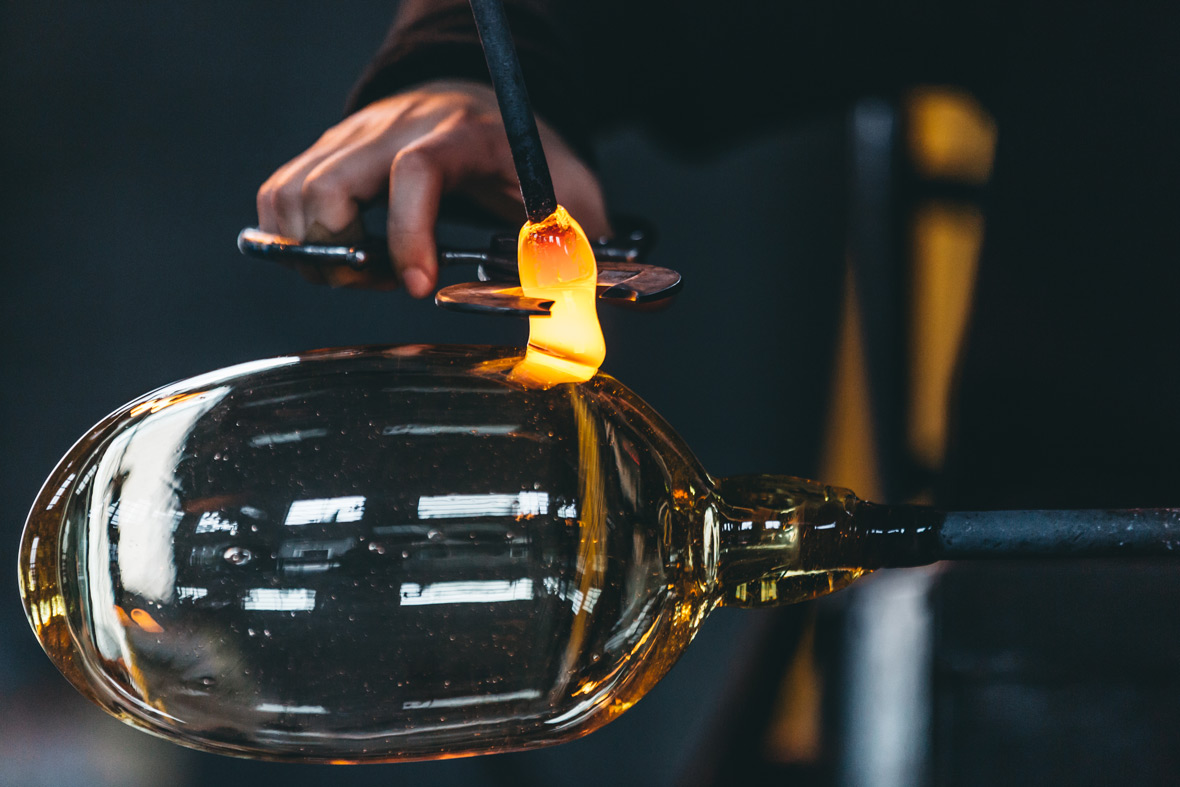
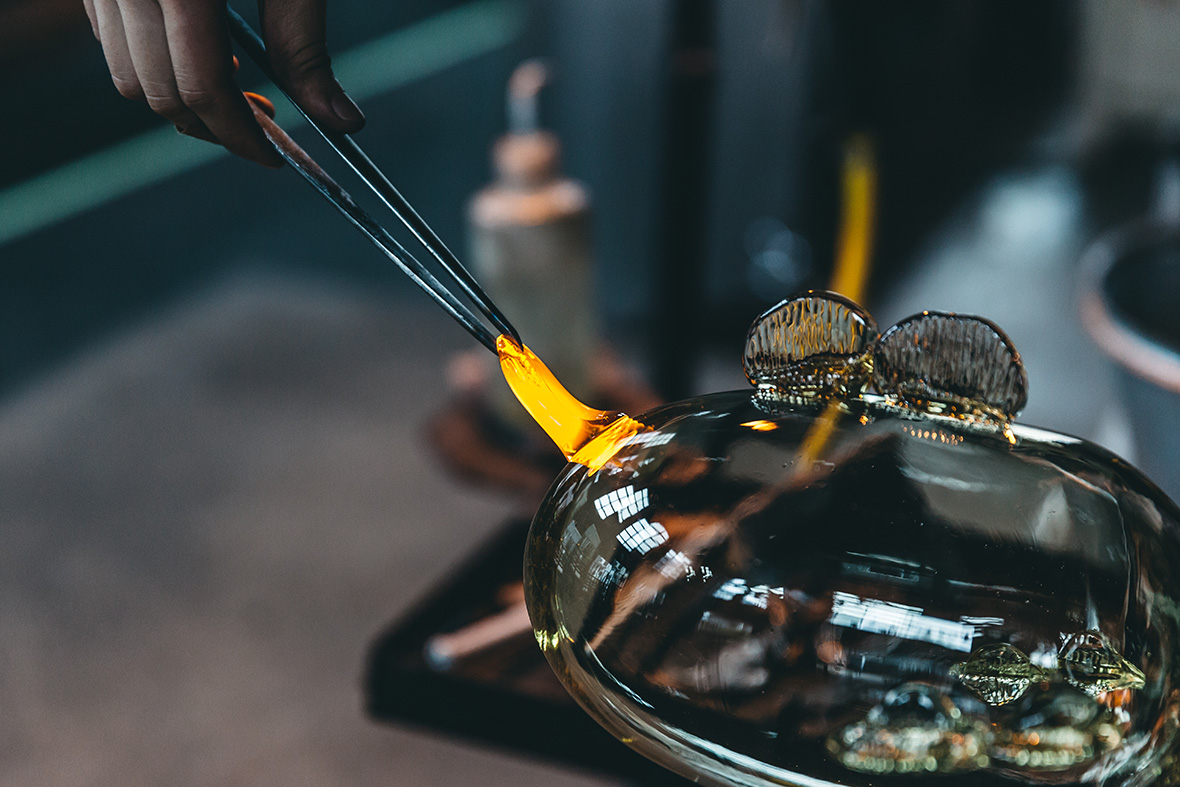
Du Meng describes herself as someone who “uses glass to tell stories.” She sees glass as a medium that’s helped her share anecdotes about the people in her life and her own personal experiences. And she thinks glassblowing isn’t so different from actual storytelling—they’re both always works in progress that can develop in limitless directions. And they can both slip out of your hands if you’re not careful.
杜蒙喜欢称自己为“一个用玻璃讲故事的人”,一来是因为玻璃的确是讲述她与身边人的故事的媒介,二来,是因为用玻璃创作的确与写故事无异──它永远在“现在进行时”,既拥有无穷发展的可能,也随时面临着功亏一篑的挑战。
“When working with other materials, you’ll think about what you want to make first even though it might not be a definitive idea. When I’m creating with glass, all of this is happening at the same time. I’m making adjustments as the work is being created,” she explains. “Every piece of work I make is like an individual character with their own stories, and when they’re all together, a new story begins to emerge.”
“在你用其他材质做作品之前,你就会先想到要做什么,并不是会有一个大体的方向,但是我在创作的时候,所有的都是同时发生的,就是一边做一边去调整。”杜蒙说,“所有的作品,都仿佛是一个一个故事中的角色,但把它们互相组在一起,又会产生一个新的故事。”
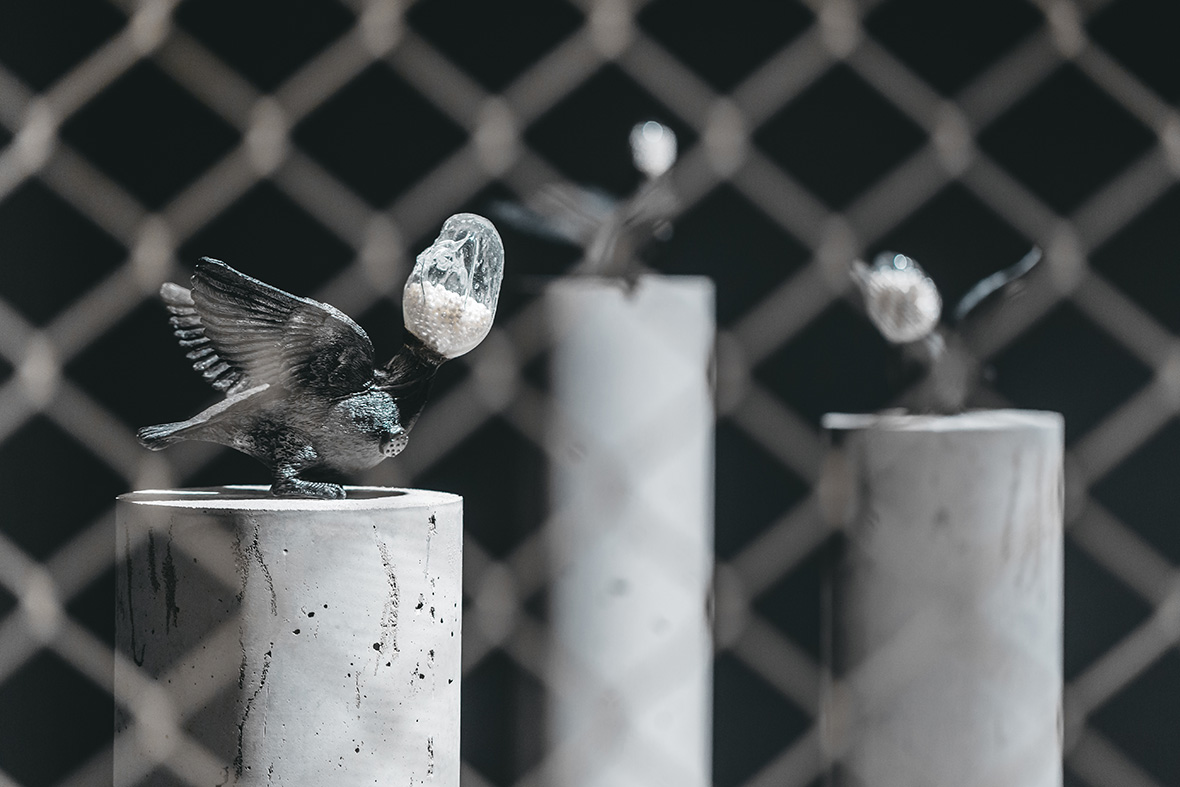
But over time, Du Meng’s relationship with the medium began to change.
In the beginning, her works had a very personal style, and were a means for her to “better understand herself and her relationship with her art.” Fast forward to today, Du Meng now believes a successful piece of glass art should be the result of fully understanding the story you wish to tell. As a result, her work now attempts to explore the complex relationship between humans, physical spaces, nature, other living organisms, and our changing world.
These are the new world perspectives she’s acquired from glass. “Working with glass, I gained a newfound attitude for life, and it changed my way of thinking. This is especially with the case with glassblowing – this type of art something that can instantly reveal an artist’s temperament. And the road to learn glassblowing is filled with uncertainties and challenges. If your artwork breaks, how do you react, how do you face your failure? Having worked for a while, I feel like I’m a much stronger person. It’s helped me become calmer and more composed,” she smiles.
慢慢地,杜蒙与玻璃之间的关系变了。
一开始,杜蒙的作品充满个人化风格,在“梳理清楚自己和自己在创作之间的这种关系”;而如今的杜蒙觉得,真正成功的玻璃艺术品,诞生于“把它整个的故事情节梳理清楚的时候”,随之也会更多地“去探讨人、空间,然后以及自然,以及生物、我们周围的各种各样的变化、隔阂,这之间的错综的关系”。
这是玻璃给她带来的全新的角度。从前亦步亦趋的那种危险关系,变成了某种财富:“我觉得其实在跟玻璃工作的过程当中,学到了很多思考的方式和对生活的态度。特别是做吹制,一秒就能看出人的性格的……然后,就是你在学这个吹玻璃的这个过程当中,你会经历很多很多状况,未知的元素特别多。那你如果东西破了,你要怎么样去反应,要怎么样去面对你的失败?我觉得工作时间久了好像心里也变得坚强了一些,特别从容吧。”杜蒙笑着说。

Du Meng’s limited-edition sculptures Shimmer No. 1 and Shimmer No. 2 are now available in the Neocha Shop.
目前杜蒙的玻璃塑像《微光》系列(一号和二号)已经在 Neocha Shop 上线。
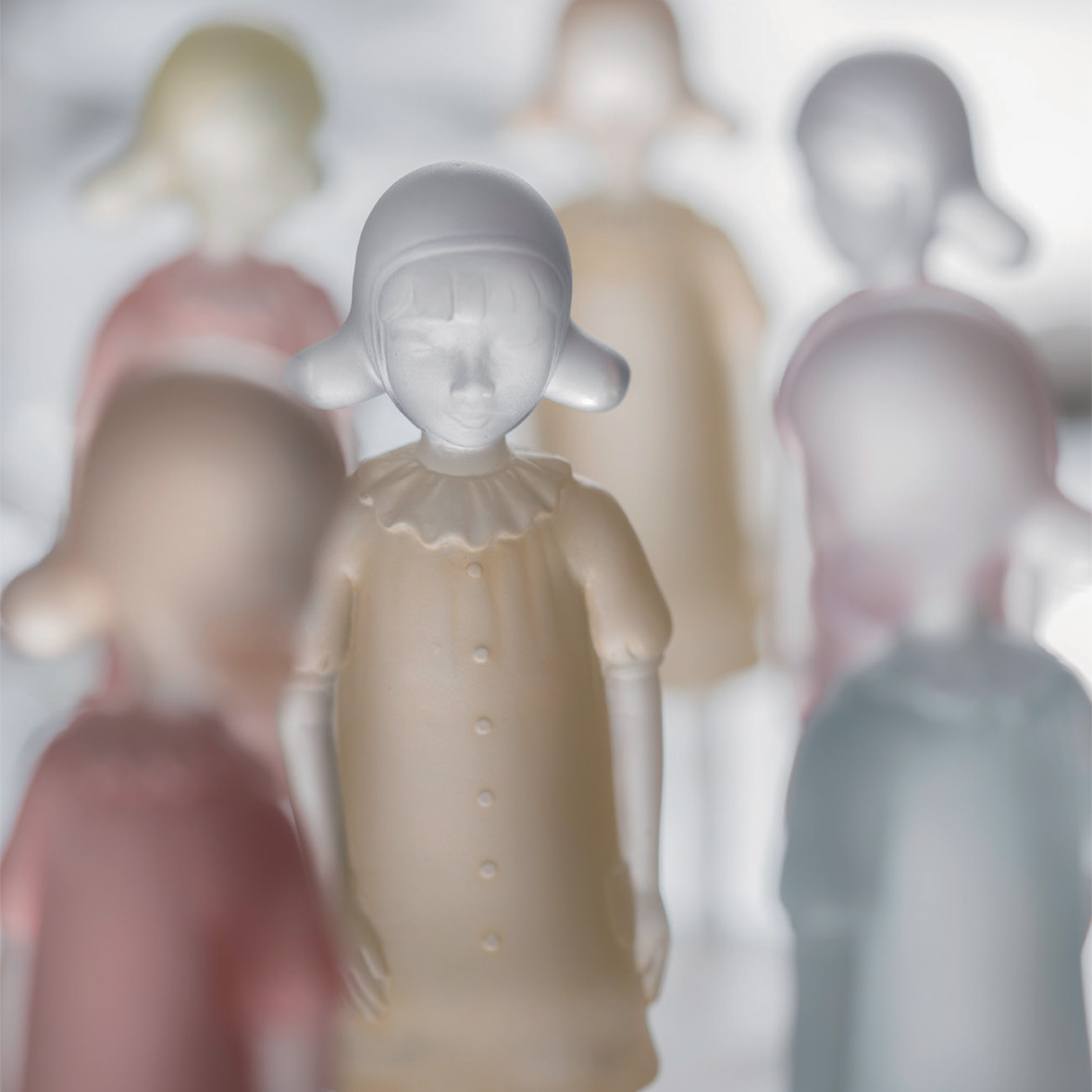
Website: www.mengduwork.com
Instagram: @moe_mengdu
Contributor: Chen Yuan
Videographers: Yang Bingying, Damien Louise
Photographer: David Yen
网站: www.mengduwork.com
Instagram: @moe_mengdu
供稿人: Chen Yuan
视频摄影师: Yang Bingying, Damien Louise
图片摄影师: David Yen

